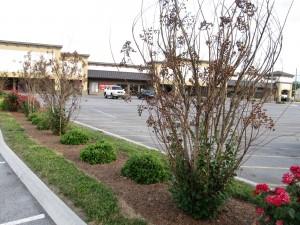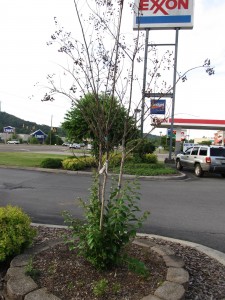Extremely cold winters of 2013-14 and 2014-15 have damaged many cultivars of crape myrtles (Lagerstroemia x indica). Don’t assume that new crape myrtles are hardy; many are rated hardy only to zone 7. Several of the U.S. National Arboretum cultivars are hardy in zone 6. Gardeners living in the Mid-Atlantic or the lower Midwest states, where crape myrtles are iffy, frequently start over by cutting them back near the ground in spring and fertilizing.
Is your crape myrtle dead? First, determine if the tree (shrub) is alive? Nick the bark with your fingernail or a knife to determine if the wood is still green (living). Use a chain saw, pruning saw or loppers to cut the trunk(s) close to the ground. Within a few weeks green shoots will begin sprouting around the base. Choose 3 – 5 well-spaced shoots to become the new main trunk(s) and cut off the rest. Large specimens can sucker back and even bloom in late summer and the early days of autumn.
Fertilize every 6 – 8 weeks with a high-nitrogen fertilizer until mid-August and no more through the end of the year. Maintain 2 – 3 inches of mulch and keep soil and mulch away from the shrub/tree base. Irrigate crape myrtles bi-monthly in the absence of rainfall.
When replanting, set crape myrtles in the ground shallow and never deep in the planting hole. Stop the practice of hat-racking, commonly called “crape murder”, as it places a tree under stress and more susceptible to winter freeze damage. Do not prune crape myrtles in the winter months (early March in most areas).
Finally, select exceptionally cold-hardy cultivars, such as ‘Natchez’ (tree form, white blooms), ‘Hopi’ (shrub, medium pink), ‘Acoma’ (shrub, white).



 Posted in
Posted in 
